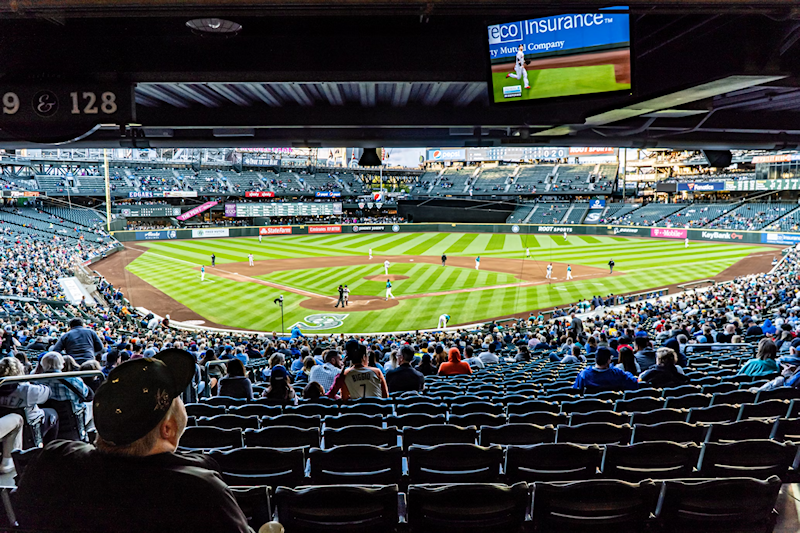 02.04.2025 - Major League Baseball management games have evolved far beyond basic simulations. Today’s titles reflect the nuance, unpredictability, and strategic depth of professional team operations.
02.04.2025 - Major League Baseball management games have evolved far beyond basic simulations. Today’s titles reflect the nuance, unpredictability, and strategic depth of professional team operations.
From trade negotiations and scouting to lineup decisions and clubhouse chemistry, these games mirror how real-world front offices think, plan, and adapt throughout a 162-game season. What makes these simulations so compelling isn’t just the stat tracking or the player development curves—it’s the uncanny ability to recreate the challenges of running a professional baseball organization.
Strategic Decision-Making Mirrors Front Office Thinking
Baseball management games, like Baseball Mogul 2024, build their core around choices that mimic the strategic dilemmas real general managers face. Whether you're deciding which prospects to protect from the Rule 5 Draft or how to balance veteran leadership with emerging talent, the games reward long-term planning and punish shortsighted moves.
Franchise modes often replicate the tension between financial limitations and roster needs. For example, should a manager extend a rising star early, potentially locking in a bargain, or wait and risk paying a premium later? These decisions go beyond simple numbers. They're layered with context—player morale, injury history, agent demands, and performance trends. In the real world, no two decisions are ever alike, and the same holds true in these simulations.
This deeper understanding of how team decisions unfold also appeals to fans interested in betting on MLB odds. Recognizing when a team is undervalued due to bullpen fatigue or lineup shifts gives players a sharper eye for interpreting real-world matchups. Baseball sims teach you to read between the lines—just like oddsmakers do.
Player trades aren’t just about ratings. They're about team fit, salary cap space, and timing. Good baseball simulations ask players to think like a GM, not just a number-cruncher. That depth draws in serious fans, not because it’s flashy but because it feels true to how real teams operate under pressure.
Roster Construction Reflects Real-Life Constraints
One of the most impressive aspects of modern MLB management games is how they handle roster construction. Developers design systems that mirror the 40-man roster rules, minor league options, arbitration deadlines, and service time manipulation. These aren’t just background details but critical components that influence success.
Team-building isn’t about stacking talent. It’s about managing depth, projecting player growth, and handling setbacks. Injuries force contingency plans. Underperforming veterans create tough choices. Rebuilding clubs have to resist the urge to win now, while playoff contenders must leverage assets without gutting their future.
That balancing act between short-term success and long-term viability plays out just like it does in real baseball. These games don’t hand out easy wins. They make you weigh the pros and cons of every move, just as a real front office would when trying to build a sustainable contender.
Player Morale and Clubhouse Chemistry Add Realistic Complexity
No matter how talented a roster looks on paper, internal dynamics often determine success. MLB management games increasingly integrate elements like player morale, chemistry, and leadership influence. This goes beyond mood meters or locker room quotes—these systems shape performance.
Star players may underperform if unhappy with their roles. Veterans might request trades if they feel overlooked. A manager’s decision to bench or start a player can ripple across the team’s attitude. The effects are subtle but noticeable—like in real clubhouses, where personality clashes and silent tensions can derail even the most promising seasons.
By modeling these interpersonal dynamics, games reveal how managing people is just as crucial as managing numbers. A strong roster still needs harmony to perform. Leaders emerge organically while others fade under pressure. These games don’t just simulate baseball—they replicate the emotional volatility that defines the sport at its highest level.
Scouting and Player Development Capture the Long Game
Real MLB teams invest heavily in scouting and player development because today’s draft pick is tomorrow’s franchise cornerstone—or bust. Management games treat these systems with equal seriousness. Scouting departments must assess potential, not just current ability. Development plans vary from player to player, influenced by coaching quality, playing time, and position depth.
Many of these simulations even incorporate principles from the latest MLB analytics, like spin rate, exit velocity, and pitch tunneling, to project player growth and performance. These metrics, once confined to front-office departments, are now accessible in-game, helping players make more informed decisions about how to nurture talent.
A high-rated prospect might never pan out. A late-round pick could evolve into a dependable starter. The unpredictability mirrors real life, where talent is just a starting point. How a player progresses depends on opportunity, usage, and sometimes, luck.
Games that simulate this process offer a long-view perspective. Success isn’t measured by this season’s standings alone but by how a team grows over time. Building a winning organization takes patience, foresight, and attention to detail. MLB sims excel at rewarding this approach, reflecting how the best front offices build from the farm up.
Adaptive AI Imitates Opposing Strategies
Management games also simulate the competitive landscape by giving opposing teams credible, evolving strategies. AI-controlled franchises react to trades, player performance, and injuries in ways that feel organic. A division rival may make a move to block your trade target. A rebuilding team might unload veterans at the deadline.
This reactive AI forces players to adapt constantly. There's no set playbook that guarantees success. Just like in real life, your competition responds to your actions—and sometimes, even gets ahead of them. These systems create a living, breathing baseball world where decisions have consequences beyond your own dugout.
Moreover, AI-controlled managers adjust lineups, rotate pitchers based on fatigue, and shift in-game strategies based on opponent tendencies. These details may seem small, but they recreate the feel of real competition. Every matchup becomes a chess match, not a routine simulation.
Why These Games Resonate with Baseball Fans
What makes MLB management games compelling isn’t just statistical accuracy or roster realism but their ability to tell stories. Fans often remember when they developed a star shortstop from rookie ball more vividly than a game-winning homer in an arcade sim. The attachment builds over seasons as players invest emotionally in their rosters, prospects, and managerial decisions.
That emotional connection echoes what fans experience with real teams. Every season becomes a journey, full of setbacks, surprises, and tough choices. In this way, MLB management games don’t just replicate team dynamics—they allow fans to live them.
They offer a deeper understanding of the sport, highlighting how much effort and uncertainty exist behind every roster move. For those who’ve ever questioned a trade, second-guessed a lineup, or wondered why a pitcher got pulled early, these games offer a glimpse into the pressure, logic, and chaos behind every decision.
By blending strategic depth with emotional investment, these simulations do more than entertain—they educate. They turn fans into thinkers and casual observers into strategists. In doing so, they capture the very soul of professional baseball management.






